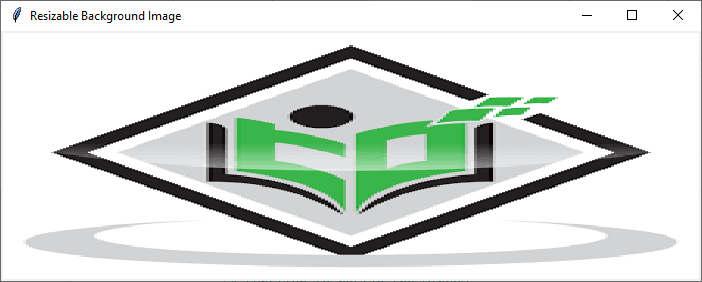
 Data Structure
Data Structure Networking
Networking RDBMS
RDBMS Operating System
Operating System Java
Java MS Excel
MS Excel iOS
iOS HTML
HTML CSS
CSS Android
Android Python
Python C Programming
C Programming C++
C++ C#
C# MongoDB
MongoDB MySQL
MySQL Javascript
Javascript PHP
PHP
- Selected Reading
- UPSC IAS Exams Notes
- Developer's Best Practices
- Questions and Answers
- Effective Resume Writing
- HR Interview Questions
- Computer Glossary
- Who is Who
Resize background image to window size with Tkinter grid manager?
When developing graphical user interfaces (GUIs) using Tkinter, it is often desirable to have a background image that dynamically adjusts to the window size, providing a visually pleasing and immersive experience for users. In this article, we will explore how to resize a background image to fit the window size using the Tkinter grid manager. Tkinter, a popular GUI toolkit for Python, offers various geometry managers for organizing widgets within a window.
The grid manager, specifically, allows widgets to span multiple rows and columns, making it well-suited for handling complex layouts and resizing scenarios. By leveraging the grid manager and binding a resize event to the window, we can effortlessly resize the background image based on the window's dimensions, ensuring that the image maintains its aspect ratio and fits seamlessly into the GUI. This technique opens possibilities for creating visually captivating Tkinter applications with flexible and dynamic background images.
In this article, we will explore how to resize a background image to the window size using the Tkinter grid manager.
Setting up the Tkinter Application
Let's begin by setting up a basic Tkinter application with a window and a canvas widget to display the background image.
# Import the required libraries
from tkinter import *
from PIL import ImageTk, Image
# Create an instance of Tkinter Frame
win = Tk()
# Set the geometry of Tkinter Frame
win.geometry("700x250")
# Open the Image File
bg = ImageTk.PhotoImage(file= "image.png")
# Create a Canvas
canvas = Canvas(win, width=700, height=3500)
canvas.pack(fill=BOTH, expand=True)
# Add Image inside the Canvas
canvas.create_image(0, 0, image=bg, anchor='nw')
Loading and Resizing the Background Image
Next, we need to load the background image and resize it based on the window size. To achieve this, we'll define the resize_image function and bind it to the window's resize event. This function will calculate the new dimensions of the image based on the window's current size and then resize and update the image on the canvas.
def resize_image(e):
global image, resized, image2
# open image to resize it
image = Image.open(file= "image.png")
# resize the image with width and height of root
resized = image.resize((e.width, e.height), Image.ANTIALIAS)
image2 = ImageTk.PhotoImage(resized)
canvas.create_image(0, 0, image=image2, anchor=tk.NW, tags="background")
# Bind the function to configure the parent window
win.bind("<Configure>", resize_image)
win.mainloop()
In the resize_image function, we first load the background image using the tk.PhotoImage class.
Don't forget to replace "image.png" with the path to your desired image file.
Then, we retrieve the current window size from the event object passed to the function. This event is triggered whenever the window is resized.
Using PhotoImage object, we resize the image to match the new dimensions.
Finally, we bind the Bind the function to configure the parent window.
Example
Let's check out the complete implementation code and its output
# Import the required libraries
from tkinter import *
from PIL import ImageTk, Image
# Create an instance of Tkinter Frame
root = Tk()
# Set the geometry of Tkinter Frame
root.geometry("700x250")
root.title("Resizable Background Image")
# Open the Image File
bg = ImageTk.PhotoImage(file="image.png")
# Create a Canvas
canvas = Canvas(root, width=700, height=3500)
canvas.pack(fill=BOTH, expand=True)
# Add Image inside the Canvas
canvas.create_image(0, 0, image=bg, anchor='nw')
# Function to resize the window
def resize_image(e):
global image, resized, image2
# open image to resize it
image = Image.open("image.png")
# resize the image with width and height of root
resized = image.resize((e.width, e.height), Image.ANTIALIAS)
image2 = ImageTk.PhotoImage(resized)
canvas.create_image(0, 0, image=image2, anchor='nw')
# Bind the function to configure the parent window
root.bind("<Configure>", resize_image)
root.mainloop()
Output
After running the above code, you will get a window having an image that can be dynamically resized.

Conclusion
In this article, we have explored the process of resizing a background image to fit the window size using the Tkinter grid manager. By utilizing the grid manager and binding a resize event to the window, we can achieve a visually appealing and immersive user interface. The ability to dynamically resize the background image ensures that it remains proportionate and aesthetically pleasing as the window is resized.
With this technique, Tkinter applications can provide users with a seamless and enjoyable experience, as the background image adapts to different window sizes. The grid manager's flexibility allows for easy organization of widgets, enabling developers to create complex layouts with ease. By incorporating resizable background images, developers can enhance the visual appeal and overall user experience of their Tkinter applications.
We encourage you to experiment with different background images and layouts to create visually captivating and user-friendly interfaces that adapt to varying window sizes. Tkinter's grid manager and event handling capabilities make it a powerful tool for building dynamic and responsive GUIs.

